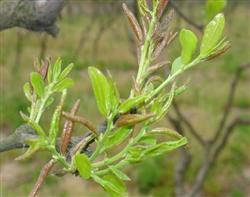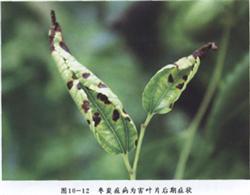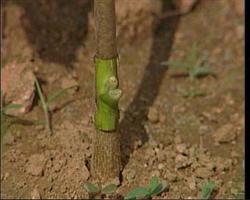Control methods of jujube gall midge pests

This insect is commonly known as jujube leaf maggot, distributed in all jujube areas of the country, damaging young leaves, buds and young fruits of jujube trees with larvae. Young leaves were affected by cylindrical curl, package purple, hard brittle, soon black withered. After the flower bud is killed, it cannot open and wither and fall off. The young fruit is not affected by proper growth, like soybean size, it turns yellow and falls off, threatening jujube trees greatly. [10] The population is estimated to have about 4 generations per year. The larvae overwinter as cocoons on the surface of the soil or in the soil crevices at the base of the trunk. Adults lay eggs in the first and middle of April, larvae harm young leaves in the first and middle of April, larvae mature in early May and pupate in soil. The second generation larvae appear in the middle and late May, damaging flower buds and tender leaves. Because this generation larva harms jujube organ differently, causes the adult to develop irregularly, causes the generation overlapping. The larvae of the second generation appeared in early July and early and middle August, and damaged jujube fruit. [Control methods](1) From April to August, spraying timely to protect new leaves and fruits during the adult development stage and the initial stage of larval damage of each generation. The medicament can be prepared by 500 times solution of 30% acephate emulsion or 1000 times solution of 80% dichlorvos emulsion. (2) Ground application in late March or early April. (3) Deep soil ploughing in jujube garden in winter.
- Prev

How to control jujube anthracnose
First, the symptoms: the infected fruit first appeared reddish-brown spots, then the disease spot gradually enlarged, surrounded by a light yellow halo ring, and finally the disease spot color became dark brown, slightly sunken but then expanded slowly, and the shape of the disease spot was diversified, such as round, oval or fusiform. The flesh in the spot changes from green to brown and necrotic.
- Next

Techniques of bud grafting of jujube in summer
Before that, we are going to choose sour jujube seedlings with strong growth, no diseases and insect pests, and the base stem diameter is more than 0.5 cm as rootstocks. Cut strong growth, no diseases and insect pests, full bud eyes, annual Lignification branches as scions, 0.4-0.6 cm in diameter, cut off leaves and leave petioles. Cut the scion into 20-30 cm long segments and use wet sand.
Related
- Moge, come on! The staff of the peasant association in the producing area of cantaloupe were frightened when the crowd gathered.
- Causes and Solutions of low Fruit setting rate of Apple
- Symptoms and control measures of passion fruit virus disease
- Fruit growing lesson: how do apple orchards keep high yields?
- Can you build orchards in the mountains? What are the pros and cons?
- How to manage the coloring period of Crisson grape?
- This paper introduces the processing technology of two kinds of fig products.
- How much is a month for retired teachers in rural areas by 2020?
- How can strawberry planting increase sugar content? We should pay attention to management in many aspects.
- What are the cultivation techniques on how to improve the yield of golden fruit?

